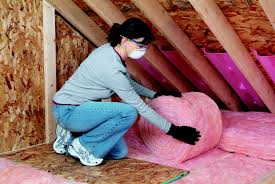Insulating your attic is important for keeping your home warm and cozy during the cold winter months. Insulation is a material that contains tiny air pockets that trap heat. An insulated attic keeps the home warm during winter months and cool during hot summer months. Aside from maintaining the comfort of your home, it also helps conserve energy and save money. In addition, it also increases the value of your house because potential buyers view it as an update that will improve their daily lifestyle.
Below are a few tips will aid you in properly installing insulation in your attic:
- Choose attic insulation with a great R-value. R-value is the measure of insulation’s ability to resist heat flow. The higher the R-value, the better the thermal performance of the insulation. The insulation should be at least 9.5 to 12 inches with an R-value within the range of R-30 to R-38.
- The most commonly used insulation types are cellulose, fiberglass, and spray foam insulation. The R-values between cellulose and fiberglass insulation are the same, but they vary in thickness. Usually, cellulose insulation is 2-3 inches thinner than fiberglass insulation. They both provide proper insulation for your home, but they have different features. The downside of cellulose insulation is that it causes corrosion on metal objects; however, it can wholly insulate the wall and wall studs, thus providing total protection. Fiberglass insulation, on the other hand, does not cause corrosion, but it cannot flow around wall studs, so the insulation isn’t quite as airtight. On the other hand, there two types of spray foam: open cell and closed cell. The major advantage of using spray insulation is that it allows you to move the building envelope, which is the boundary between conditioned and unconditioned space.
- Install attic vents along the entire ceiling cavity to ensure maximum air flow.
- Place the insulation approximately 4 to 5 inches away from lighting features because they are the main source of heat loss in a home.
- The insulation should not cover areas of attic ventilation like roof vents, soffit vents, and gable vents. It is important to maintain air circulation in the attic to help keep things dry and warm.
Heather & Alan Davis
Oklahoma City Realtors
http://www.alanandheatherdavis.com

